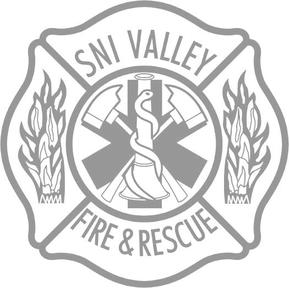
Heating Safety
Kerosene Heaters About 90 persons died in estimated 2,300 residential kerosene heater related fires every year. "Flare-up" fires are responsible for the majority of kerosene heater fires. An analysis of kerosene related accidents concluded that flare-up (uncontrolled flaming: occurs as a result of several factors, including the use of improper or contaminated fuels. That investigation concluded that one method for substantially reducing the risk of flare-up is for consumers to make sure they use only 1K kerosene as a fuel-never gasoline or non-kerosene fuels. In addition, kerosene heaters can emit air pollutants during operation. In an enclosed room, these pollutants can accumulate and prove harmful. This situation can be aggravated if the heater wick is lowered beyond the manufacturer's recommended setting. Therefore, before using a kerosene heater, people need to set the wick at the recommended height and make sure there is adequate ventilation. Wood Stoves Wood and coal burning have also been responsible for many home heating accident. Wood stoves, fireplaces, and their chimney assemblies are estimated to account for more than 100,000 residential fires every year, resulting in almost 200 deaths. The dangers associated with this type of heating system are fire and burns resulting from improper installation and creosote buildup. Due to the number of accidents that have occurred, The CPSC has issued a labeling rule on wood stoves to provide a permanent reference to proper installation, operation maintenance procedures and to raise consumer awareness of these dangers. When installing a wood stove, make certain that it is placed on the surface and at the distance from the wall recommended by the manufacturer. Most wood heating fires have occurred in the chimney. Such fires can result from poorly constructed or damaged masonry chimneys, poor installation of factory built chimneys or the ignition of creosote, a tar-like residue which builds up in chimneys over time and is caused by low temperature fires. To reduce the risk of fire, existing masonry chimneys should be inspected and repaired if necessary. Also, special care must be taken when installing a factory-built chimney to ensure it is kept the required distance from nearby combustible materials. People should have their chimneys checked by a qualified chimney sweep before, as well as during, the heating season to prevent a dangerous creosote buildup and resultant chimney fire. At the say time, both the fireplace and chimney should be checked for structural integrity. And as a final precaution, never burn trash, charcoal or plastics in your wood burning appliance. These items can overheat you stove or fireplace causing a fire. They can also cause a buildup of pollutants when burned in a fireplace. Always make sure the area is properly ventilated. Electric Space Heaters Portable electric heaters, while seemingly harmless, are responsible for 2600 fires and 130 deaths annually. These heaters are not substitutes for central heating. Nor are they designed for extended use.
Gas Heaters Gas heating equipment can also lead to tragedy if not installed or used properly. Every year, an estimated 400 lives are lost and 18,600 fires occur involving central furnaces, portable gas heaters, and other gas heating equipment. These products are associated with the twin dangers of fire and carbon monoxide poisoning. All new unvented gas-fired space heaters are equipped with an oxygen depletion sensor (ODS). An ODS detects a reduced level of oxygen in the area where the heater is operating and shuts off the heater before a hazardous level of carbon monoxide accumulates. These heaters also have labels that warn users about the hazards of carbon monoxide. If you have an older unvented gas fired space heater that does not have an ODS, consider replacing it with a new, ODS- equipped model. If the pilot light of your heater should go out, remember these tips:
Carbon Monoxide Poisoning About 230 people die each year from CO poisoning related to fuel burning household appliances, such as furnaces, space heaters, water heaters, clothes dryers, kitchen ranges, wood stoves and fireplaces.Each year, approximately 25 people die and hundreds more suffer from carbon monoxide poisoning when they burn charcoal in enclosed areas such as their homes - in a bedroom or living room for heat or cooking. Some also burn charcoal in campers or vans, or in tents. When inhaled, carbon monoxide, a tasteless, odorless gas, is easily absorbed into the blood. The gas is lethal when it replaces the amount of oxygen needed to sustain heart and brain function. Symptoms of carbon monoxide poisoning include headaches, fatigue, weakness, shortness of breath, and nausea, are often dismissed as a "touch of the flu," even by doctors. Tips:
|
Back to Community Risk Reduction Main Page
|
Copyright ©2006 -
Sni Valley Fire Protection District
|
|

